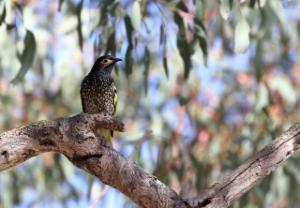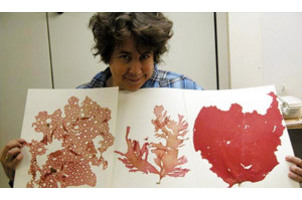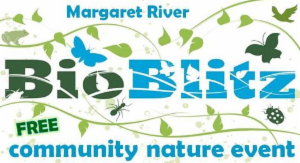Search for rkid_genus group%3Aurn%3Alsid%3Abiodiversity.org.au%3Aafd.taxon%3Aa38442cb-d0ce-4fe2-8e44-a596e093bf6f returned 669 results.
Refine results
Refine results
Section
- Site Page (332)
- Biodiversity Science project (178)
- Data provider (85)
- Data resource (32)
- Support article (30)
- Institution (11)
- Spatial layer (1)
-
Biodiversity Science project: BowerBird
BowerBird is a social, web-based, biological sandpit – where everyone can come and play. Add a sighting, see it be recognised, commented on and identified or that find that it contains unknown information about a species; and, then to see the sighting become part of a larger picture for a species or ecosystem and finally to have the sighting information integrated with national and international databases...

-
Biodiversity Science project: City Nature Challenge/San Diego
City Nature Challenge, which takes place from April 27-30, 2018, is a worldwide competition to see which city can make the most observations of their local plants and animals over a 4-day period. And San Diego composes part of one of only 35 biodiversity hotspots in the world, so we should have this in the bag! The global event is organized by Natural History Museum of Los Angeles and California Academy of Sciences, and The Nat is spearheading our local effort...

-
Biodiversity Science project: Budawang Coast Atlas of Life
This project is entirely run by volunteers. Everyone who observes and records the life of this region is encouraged to log their sightings and make a preliminary identification. Moderators are appointed for each species group and they confirm each sighting before it is uploaded to the Atlas of Living Australia. All contributors to the Budawang Coast Atlas of Life are thereby making a verified and valuable rich contribution to our national archives...

-
Biodiversity Science project: CTLLS Woodland Birds on Farms Project
The 'Woodland Birds on Farms' project brings together species experts and the community to help the Regent Honeyeater and other declining woodland bird species survive in the Capertee Valley, Mudgee-Wollar and South-west Slopes Key Biodiversity Areas on the Central Tablelands...

-
Biodiversity Science project: Orange-bellied Parrot Recovery
The Orange-bellied Parrot is a small 'grass parrot' and as its name suggests, has an orange patch on its belly. They migrate between the Australian mainland and Tasmania, spending summer breeding in Tasmania and winter in coastal Victoria and South Australia. Orange-bellied Parrots nest in hollows of eucalypt trees near button grass plains in south-west Tasmania. Sadly, the OBP is one of Australia's most threatened species, with less than 50 parrots thought to exist in the wild today...

-
Biodiversity Science project: Herbarium@home
Herbaria@home is a ground-breaking new approach to digitizing and documenting the archives of the United Kingdom's herbaria. This site provides a web-based method for documenting herbarium sheets. This is important work that will help make the collections accessible to researchers and the public. With your help and expertise and the support of 1000's of other like-minded volunteers we can realistically document the entire herbarium collections of even major institutions...

-
Biodiversity Science project: Margaret River BioBlitz 2015
BioBlitz is coming to Margaret River! The BioBlitz is a celebration of science in nature that aims to build a picture of local biodiversity. We're inviting the whole community to join our team of experts to discover what's living in Margaret River's "A" Class Reserve. Specialists will lead guided walks and activities to locate and identify as many different species of flora and fauna as possible. Everything the "citizen scientists" find will be documented to monitor local wildlife...

-
Biodiversity Science project: Backyard ANTology
Ants are widespread, play important roles in many ecosystems, and exhibit variation in biodiversity across urban-rural gradients. Yet, there is little ecological information on ants in California's Central Valley, a region characterized by a range of human-impacts—from rapid urbanization to intensive agriculture. Our program aims to open this ecological black box while also engaging citizens in science they can conduct in their schools, parks, or backyards...

-
Biodiversity Science project: NatureWatch NZ
NatureWatch NZ is a citizen science project dedicated to exploring and discovery New Zealand's biodiversity. If you see an unusual or interesting bug, plant, or any other species, take a photo of it, upload the photo to NatureWatch NZ, and learn all about it. The NatureWatch NZ online community will ID your species for you. You can also help others to ID their photos, and you can join (or create!) projects about the species and places you're most interested in...

-
Biodiversity Science project: Pericopsis
"Pericopsis" is a free and collaborative database for the localization and identification of trees. Pericopsis can be consulted and upgraded by everyone using Google map. The proposed principle is a "Wiki" which means "making it easy to correct mistakes rather than making it difficult to make them". When a contributor identifies a tree he can put the tree name on a map and self evaluate his contribution as: "unsure" or "sure"...
